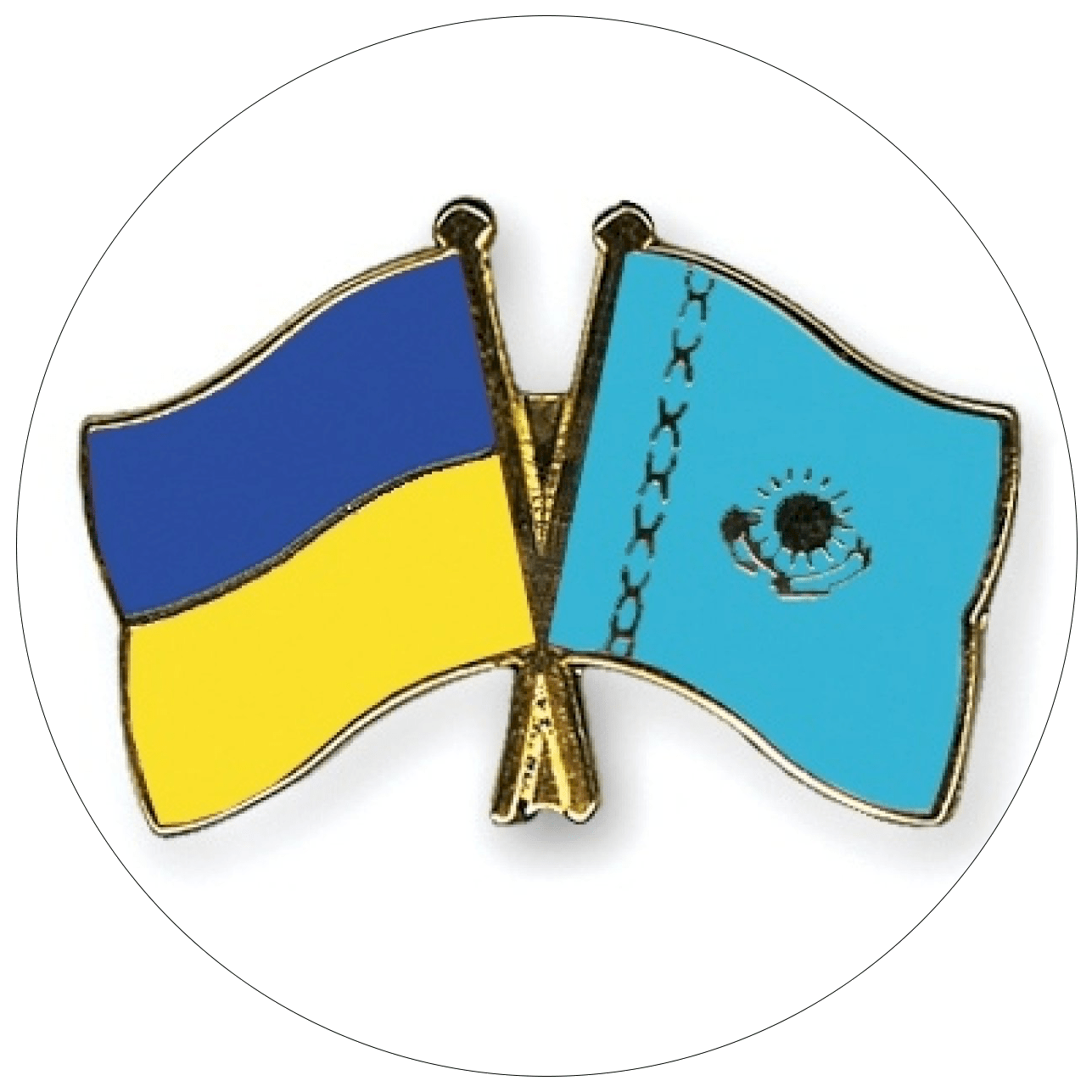Today business participates in resolution of national issues
“The Kazyna Sustainable Development Fund, which was established created by presidential decree in March 2006, has been working for already 9 months. During this period of time, it has experienced a great deal of criticism and opposition, which we particularly could observe during the most recent session of the “Exclusive Club”. Kazyna has become a promoter for a number of large investments projects.
Zhandos Tulegenov
The most significant recent project undoubtedly was the opening of the Alatau IT-city information technology park. It took place on September 15th in the Alatau village, 25 kilometers from Almaty. This is the first such technology park, not only in the city but the entire CIS. The idea for the creation of this technology park was that of President Nursultan Nazarbaev, three years ago, while he visited the Center for Information Technology in the Indian city of Bangalore. In early 2006, the president established a goal to create an information technology park as a regional IT-center, announcing the plan in his presidential address to the nation.
A special role is being given to the Kazakhstani version of “Silicon valley,” for the further creation of an innovative society, capable of undergoing a transition to become one of the most competitive countries in the entire world. In addition, it is planned that the park will function as the advanced technology capital of all Central Asia. It will act as a bridge, connecting Central Asia with world technological centers. This will bring about the integration of the CIS and the Shanghai group of countries.
The Largest transnational giants in information technology, including Microsoft, Cisco Systems, and Oracle have already stated their intention to cooperate with the Alatau IT-city. Cooperation agreements have been closed with technology parks in other countries including India, Malaysia, Israel, and China. The Alatau IT City project is one of the most interesting “breakthrough” projects. According to the Kazyna Fund, its creation will provide a serious impulse for subsequent economic development of the country and an improvement of the Commonwealth. Just 1 square meter of technology park will cost $390, which is 63 times more than the average price for real estate throughout Kazakhstan. For the construction of the first stage of the park, $25 million was spent, but each year, its profit will reach no less than $30 million.
The total size of the park, which has been officially classified as a free economic zone, will be 343 hectares. It is intended to include more than 330 companies, and will create 16,000 jobs. At present, the demand for the acquisition of a site in the park exceeds available spots. The IT city will include a number of projects, such as a liquid crystal sheet production plant, which is a joint venture between the NIF JSC, Glotur and DS Multimedia of Singapore. Thales Communications Kazakhstan plans to produce radio systems and accessories as well as software at the park.
Along with the creation innovation products, the training of local teaching local professionals will be a priority for its operation. For example, Microsoft and Cisco are opening their own educational centers at the Alatau IT City. As a whole, the technology park will contribute to the complete use of the country’s scientific and intellectual potential. Not long before the opening of the technology park, the Kazyna Fund signed a cooperation memorandum with the German company — ThyssenKrupp on September 6th. This company is a world leader in the production and sales of steel, technology, equipment and services with an annual turnover over 42 million euros. The Kazyna Fund invited the representatives from the Eurasian Group, Kazakhstan Temir Zholy, as well as a large contractor for the exploration of the Caspian shelf to meet ThyssenKrupp. As a result of these meetings, the parties involved reached agreements on implementation of several new projects in Kazakhstan.
One of the promising areas for collaboration with ThyssenKrupp is the production of stainless and alloyed steel. The country’s domestic needs for this product are now being evaluated, along with available raw materials and prospects for the organization of production. There are some prerequisites for the establishment of such production in Kazakhstan. These include a rich resource base, advanced industrial experience (15 years ago — 1.5 million tons of rolled metal were produced), growing domestic consumption, and the ability to produce the product at a low prime cost. ThyssenKrupp intends to create a service distribution center, which will be engaged in the supply of final products, the evaluation of demand and the return on investment for production in Kazakhstan.
Negotiations are now underway with such companies. The Kazakhstani Sat&Co is counting on the supply of equipment from ThyssenKrupp and its participation in a joint project with the Kazyna fund for financing its project for the production of average rate rolled metal. This project envisages the organization of the production of rolled metal at the capacity of 200,000 tons per year in Almaty. The total volume of investments required is forecasted at $58 million.
The Eurasian Industrial Association is also considering the possibility of a partnership with the German company. It plans to launch the manufacturing of metallic rolled briquettes at 200-300 thousand tons capacity per year, as well as a universal steel smelting workshop. The total amount of investments could be from $100 to $500 million. EIA, ThyssenKrupp and the Kazyna Fund have agreed to consider opportunities for joint participation in the financing of this project, along with developing a business project and a technological consultation system.
Another are for joint operations is expanding the national railway infrastructure. At the moment, the establishment of a joint venture between Magistral and ThyssenKrupp is under review, for the production of compound railway sections. Kazakhstan has stressed the high demand for high-quality products for constructing railway routes in country, as well as throughout Central Asia and the Caspian.
ThyssenKrupp has said that it is prepared to offer a broad spectrum of the latest technology, including for the production of terminals and “epsilon” sleepers and railway tracks. It has also expressed a readiness to train local professionals and supply machinery. A detailed analysis is being held on market demand for the next 5 years, which will allow for determining the precise assortment of goods required by the market, and planning for the plant’s correct industrial capacity. In the near future, Kazakhstan plans to send a delegation to Germany to hold further negotiations and touring ThyssenKrupp plants.
ThyssenKrupp has also offered Kazakhstan its services on technical evaluation on the state of Kazakhstan electrical stations and on the modernization of existing capacities and construction. As fuel is rising in price worldwide, the increase of KPD at electrical stations is becoming a strategic goal.
ThyssenKrupp and Karaganda Zhyly have already agreed to consider project implementation. According to the scheme, Karaganda Zhyly will make available its own capacities for the implementation of the new ThyssenKrupp technology. As a result of this project the companies will consider the ways of further cooperation in the field of electrical energy supply.
Imstalkom JSC intends to create a joint venture along with ThyssenKrupp for the production and processing of metallic structures. In the near future, a trip on the part of representatives from ThyssenKrupp and Imstalkom is planned to Aktau for the selection of a production site for Larsen’s rabbet walls. During the initial stage, it is envisaged that a joint venture would only carry out the processing of walls supplied by ThyssenKrupp, such as welding, anticorrosion handling and painting. In the future however, it is planned to create warehouses for the temporary storage of steel walls required for the construction of artificial sea mounds and the creation of private wall production in Aktau.
The Petropavlovsk Heavy Machniery Building Plant (PZTM) JSC, together with ThyssenKrupp is considering opportunities for the creation of enterprises for the manufacture of drilling rigs for sea-boring. The German company has also expressed an interest in collaboration with the Yersay JV, which can produce steel metal structures at a 20,000 ton capacity per year.
The Kazakhstan Petrochemical Industries JSC has offered materials for the construction of a plant to manufacture polyethylene and polypropylene near Atyrau, at a 800,000 ton capacity per year, and 400,000 tons capacity per year respectively. The total amount of investments for the construction of the complex is planned at $4 billion; the timeline of the construction will be up to 5 years. ThyssenKrupp has expressed interest to serve as a contractor during the construction, for both the entire complex and its individual sections. The Belkamit LLP has offered to participate as a producer of high-pressure boilers and vessels for the petrochemical industry. In addition, Belkamit wants to be a subcontractor for ThyssenKrupp projects related to chemical and petrochemical production in Kazakhstan. ThyssenKrupp is also participating in the creation of equipment for manufacturing chlorine and caustic soda using membranes in Pavlodar.
The Kazyna Fund has become the appropriate ground for holding negotiations between the national companies and foreign investors. Its participation in the organization of meetings has allowed for informing Kazakhstan business circles on prospects of cooperation with the German concern, and provides for high level bilateral talks.
The next step of the Kazyna Fund was the signing of a cooperation memorandum with Siemens AG on October 24th in on combined and mutually beneficial investment projects. Both sides agreed to contribute toward broader inter-corporate ties, an increase in mutually beneficial investments into Kazakhstan and foreign projects, as well as to exchange of technology and know-how.
The main areas for joint investment projects include logistics and transportation (including post systems, railways, intellectual transport systems, light city railway transportation and metro systems); infrastructure (production, transfer and distribution of electrical energy and water purification systems); health care; processing industries (chemical industry, cement production, paper, food, medical) and others.
As a whole, one of the most important goals of the fund is bringing Kazakhstani businesses onto regional and business markets. Some success is already being achieved via participation in international projects, the promotion of national brands on foreign markets, the acquisition of share packages in foreign companies, and the development of new technology.
The government has also ordered the fund to develop a concept for a national investment policy, which should mainly result in interaction between the infrastructure and processing industry for the determination of promising growth points. In addition, Kazyna has been appointed as an official expertise body for the government on infrastructure development and an independent source of expert analysis for projects and proposals.
Currently, the second stage is underway for the formation of the authorized capital of the Fund. The Fund will obtain shares in 7 additional state companies, including the Kazakhstan Mortgage Company, the Life Insurance Company, the State Annuity Company, the Housing Construction Savings Bank of Kazakhstan, Kazavializing, the Kazakhstan Contract Agency, the Kazakhstan Mortgage Loans Guarantee Fund, the Social Insurance Fund and following an upcoming merger, shares in the National Information Technology JSC and the Information-Calculation Technology Center will also be obtained.
For the last three years, development institutes have financed nearly 140 projects for a total value of $3.4 billion; the participatory share on the part of the government was $1 billion. According to the Chairman of the Board at the Kazyna Fund, Kairat Kelimbetov, for the diversification of the economy, this is an insignificant amount of money. The total value of projects financed, he believes, should reach no less than $10 billion with state participation at $3.5 billion. For the next three years, the financial resources needed by development institutes will be no less than $3 billion.
For the implementation of the outlined plans, Kazyna is not only counting on expanding the authorized capital of the DBK’, but will also take out loans from the national budget.
In addition, Kazyna has proposed to allocate a portion of money from the National Fund. According to forecasts, by the end of 2007, nearly $20 billion will be accumulated in the National Fund for the capitalization of development institutes through the budget. This would allow for a transfer of a portion of this money for the interior management of the DBK for financing infrastructure projects within country as well as for the purchase of strategic assets overseas. Kazyna has also offered to create joint direct investment funds and to pursue specific goals together with foreign managers, such as the targeted purchase of overseas infrastructure (ports, warehouse sites, terminals, oil shipment assets etc.), as well as to acquire large technologically-advanced companies.
The creation of modern infrastructure is a highly expensive national endeavor, however. Without pursuing this goal however, Mr. Kelimbetov believes that Kazakhstan will not be able to become competitive as compared to Russia or China, not even mentioning more economically advanced countries. At this time, large state banks such as Vneshekonombank or the Development Bank of China are allocating privileged loans for the construction of infrastructure. Kazakhstan infrastructure also requires state support.
“I believe that the primary result of the state-private sector partnership is a transformation of our mentality,” Kelimbetov said, adding that “three years ago, business didn’t even think of diversifying production or about participating in certain breakthrough projects. Today however, businesspeople share the goals that the state is facing, and want to participate, including in infrastructure and cluster-initiative projects. A dialogue has begun,” he stated.
The Kazyna Sustainable Development Fund combines seven different development institutes, including the Investment Fund, the Innovation Fund, DBK, the State Corporation for Insuring Export Credits and Investments, the Small business Development Fund, the Center of Marketing and Analytical Research and KazInvest. The Kazyna Fund operates these through its Council of Directors, without interfering in their operational activity, and also enhances its corporate management system. Kazyna defines the overall goals for the development institutes, approves budgets and plans, and appoints their management. One of the main goals of the Fund also is improving coordination of the operations of its subordinate departments.
In 2006, the cumulative authorized capital of development institutes increased by KZT 22 593,6 million and as of July 1, 2006 was KZT 144.2 billion ($1.2 billion). As of July 1, 2006, investment projects conducted by the development institutes consisted of 136 approved projects financed at a total of $3.6 million with the participation of development institutes at $1.01million. There have been 109 projects financed so far for a total amount of $2.6 billion, with development institutes’ participation at $792.6 million.
The fund has developed a clear system for the selection and formation of a projects list. Over 150 meetings with companies were held in Kazakhstan and abroad, where they discussed opportunities for the joint implementation of investment projects. Work has been done with companies from Spain, India, Germany, Japan, Austria, Russia and Tajikistan. The Fund is conducting diligent work with applicants and investors for researching each project, the determination of preliminary financing structures, determining required members from development institutes and processing project implementation plans.
The goals of the Sustainable Development Fund Kazyna are as follows:
• The creation of an efficient state investment resource management system.
• Contribution to the expansion of Kazakhstani business on global markets
• Contribution to the creation of new export-oriented production.
• The systematic development of state infrastructure.
• Increasing the level of corporate management at national development institutes.
• The initiation and structuring of breakthrough projects.
• The implementation of state initiatives aimed at developing business.
• The formation and management of foreign asset portfolios in high tech and strategic sectors.
• The transformation of the state economy into the trading and industrial center for all Central Asian countries.

 Поддержать
Поддержать
 Smart
Smart  Бизнес
Бизнес  Культурная среда
Культурная среда  Общество
Общество  Политика
Политика  "Законы XII таблиц"
"Законы XII таблиц"  Досье и мифы
Досье и мифы  Асар в Украине
Асар в Украине 


Комментариев пока нет